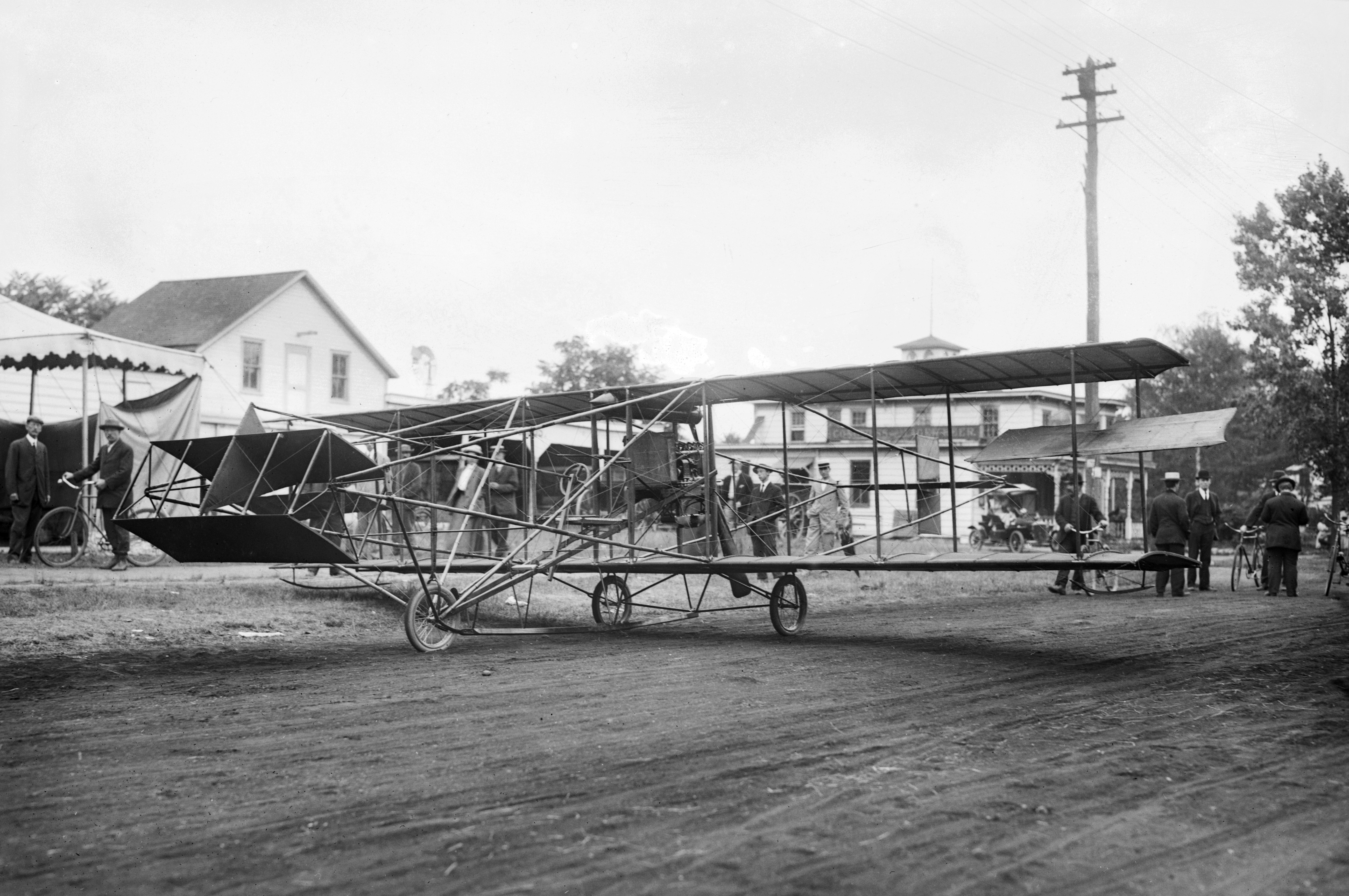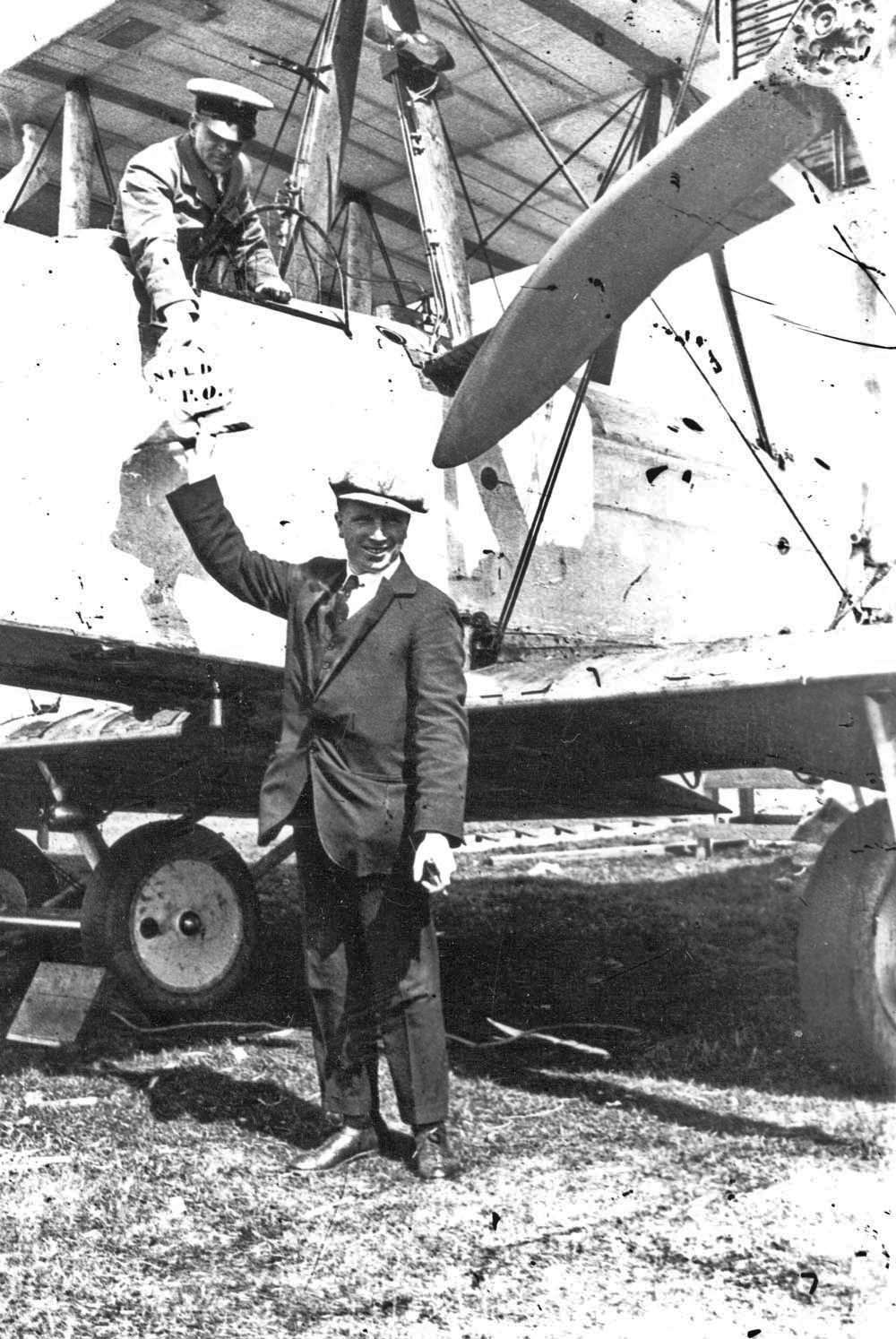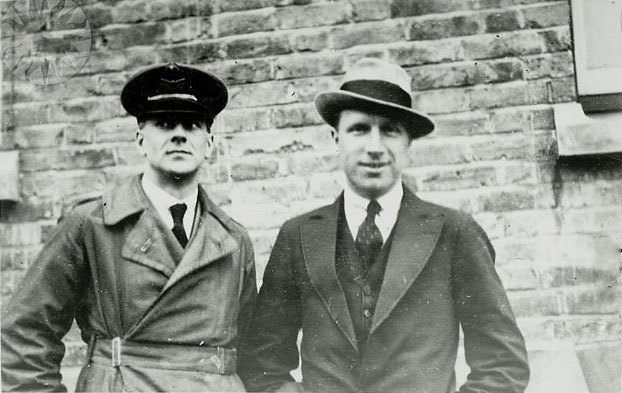|
NC-4
The NC-4 was a Curtiss NC flying boat that was the first aircraft to fly across the Atlantic Ocean, albeit not non-stop. The NC designation was derived from the collaborative efforts of the Navy (N) and Curtiss (C). The NC series flying boats were designed to meet wartime needs, and after the end of World War I they were sent overseas to validate the design concept. The aircraft was designed by Glenn Curtiss and his team, and manufactured by Curtiss Aeroplane and Motor Company, with the hull built by the Herreshoff Manufacturing Corporation in Bristol, Rhode Island. In May 1919, a crew of United States Navy and US Coast Guard aviators flew the NC-4 from New York State to Lisbon, Portugal, over the course of 19 days. This included time for stops of numerous repairs and for crewmen's rest, with stops along the way in Massachusetts, Nova Scotia (on the mainland), Newfoundland, and twice in the Azores Islands. Then its flight from the Azores to Lisbon completed the first ... [...More Info...] [...Related Items...] OR: [Wikipedia] [Google] [Baidu] |
Curtiss NC
The Curtiss NC (Curtiss Navy Curtiss, nicknamed "Nancy boat" or "Nancy") was a flying boat built by Curtiss Aeroplane and Motor Company and used by the United States Navy from 1918 through the early 1920s. Ten of these aircraft were built, the most famous of which is the NC-4, the first airplane to make a transatlantic flight. The NC-4 is preserved in the National Museum of Naval Aviation, at NAS Pensacola, Florida. Development Manufacture of the "NC"s began in 1918 during World War I."Chapter II - A Boat With Wings, p. 24." ''The Flight Across the Atlantic.'' Hammpondsport, New York: Curtiss Aeroplane and Motor Corporation, 1919. The U.S. Navy wished for an aircraft capable of long ocean flights, both for |
Transatlantic Flight
A transatlantic flight is the flight of an aircraft across the Atlantic Ocean from Europe, Africa, South Asia, or the Middle East to North America, Central America, or South America, or ''vice versa''. Such flights have been made by fixed-wing aircraft, airships, balloons and other aircraft. Early aircraft engines did not have the reliability nor the power to lift the required fuel to make a transatlantic flight. There were difficulties navigating over the featureless expanse of water for thousands of miles, and the weather, especially in the North Atlantic, is unpredictable. Since the middle of the 20th century, however, transatlantic flight has become routine, for commercial, military, diplomatic, and other purposes. History The idea of transatlantic flight came about with the advent of the hot air balloon. The balloons of the period were inflated with coal gas, a moderate lifting medium compared to hydrogen or helium, but with enough lift to use the winds that would later ... [...More Info...] [...Related Items...] OR: [Wikipedia] [Google] [Baidu] |
National Naval Aviation Museum
The National Naval Aviation Museum, formerly known as the National Museum of Naval Aviation and the Naval Aviation Museum, is a military and aerospace museum located at Naval Air Station Pensacola, Florida. Founded in 1962 and moved to its current location in 1974, the museum has since 2019 been closed to the public and open only to holders of U.S. Defense Department identification cards. Overview The museum is devoted to the history of naval aviation, including that of the United States Navy, the United States Marine Corps, and the United States Coast Guard. Its mission is "to select, collect, preserve and display" appropriate memorabilia representative of the development, growth and historic heritage of United States Naval Aviation.Coleman, J. F., "Welcome Aboard the New Naval Aviation Museum", ''All Hands - The Magazine of the U.S. Navy'', Department of the Navy, Washington, D.C., April 1975, Volume 52, Issue Number 699, pages 3-4. More than 150 aircraft and spacecraft are on ... [...More Info...] [...Related Items...] OR: [Wikipedia] [Google] [Baidu] |
Glenn Curtiss
Glenn Hammond Curtiss (May 21, 1878 – July 23, 1930) was an American aviation and motorcycling pioneer, and a founder of the U.S. aircraft industry. He began his career as a bicycle racer and builder before moving on to motorcycles. As early as 1904, he began to manufacture engines for airships. In 1908, Curtiss joined the Aerial Experiment Association, a pioneering research group, founded by Alexander Graham Bell at Beinn Bhreagh, Nova Scotia, to build flying machines. Curtiss won a race at the world's first international air meet in France and made the first long-distance flight in the U.S. His contributions in designing and building aircraft led to the formation of the Curtiss Aeroplane and Motor Company, which later merged into the Curtiss-Wright Corporation. His company built aircraft for the U.S. Army and Navy, and, during the years leading up to World War I, his experiments with seaplanes led to advances in naval aviation. Curtiss civil and military aircraft were so ... [...More Info...] [...Related Items...] OR: [Wikipedia] [Google] [Baidu] |
Curtiss Aeroplane And Motor Company
Curtiss Aeroplane and Motor Company (1909 – 1929) was an American aircraft manufacturer originally founded by Glenn Hammond Curtiss and Augustus Moore Herring in Hammondsport, New York. After significant commercial success in its first decades, it merged with the Wright Aeronautical to form Curtiss-Wright Corporation. History Origin In 1907, Glenn Curtiss was recruited by the scientist Dr. Alexander Graham Bell as a founding member of Bell's Aerial Experiment Association (AEA), with the intent of establishing an aeronautical research and development organization. According to Bell, it was a "co-operative scientific association, not for gain but for the love of the art and doing what we can to help one another."Milberry 1979, p 13. In 1909, shortly before the AEA was disbanded, Curtiss partnered with Augustus Moore Herring to form the Herring-Curtiss Company.Gunston 1993, p. 87. It was renamed the Curtiss Aeroplane Company in 1910 and reorganized in 1912 after being ... [...More Info...] [...Related Items...] OR: [Wikipedia] [Google] [Baidu] |
Transatlantic Flight Of Alcock And Brown
British aviators John Alcock and Arthur Brown made the first non-stop transatlantic flight in June 1919. They flew a modified First World War Vickers Vimy bomber from St. John's, Newfoundland and Labrador, St. John's, Dominion of Newfoundland, Newfoundland, to Clifden, County Galway, Ireland. The Secretary of State for Air, Winston Churchill, presented them with the Daily Mail aviation prizes, ''Daily Mail'' prize for the first crossing of the Atlantic Ocean by aeroplane in "less than 72 consecutive hours." A small amount of mail was carried on the flight, making it the first transatlantic airmail flight. The two aviators were awarded the honour of Order of the British Empire, Knight Commander of the Most Excellent Order of the British Empire (KBE) by George V of the United Kingdom, King George V at Windsor Castle a week later. Background John Alcock (aviator), John Alcock was born in 1892 in Basford House on Seymour Grove, Firswood, Manchester, England. Known to his family and ... [...More Info...] [...Related Items...] OR: [Wikipedia] [Google] [Baidu] |
Flying Boat
A flying boat is a type of fixed-winged seaplane with a hull, allowing it to land on water. It differs from a floatplane in that a flying boat's fuselage is purpose-designed for floatation and contains a hull, while floatplanes rely on fuselage-mounted floats for buoyancy. Though the fuselage provides buoyancy, flying boats may also utilize under-wing floats or wing-like projections (called sponsons) extending from the fuselage for additional stability. Flying boats often lack landing gear which would allow them to land on the ground, though many modern designs are convertible amphibious aircraft which may switch between landing gear and flotation mode for water or ground takeoff and landing. Ascending into common use during the First World War, flying boats rapidly grew in both scale and capability during the interwar period, during which time numerous operators found commercial success with the type. Flying boats were some of the largest aircraft of the first half of ... [...More Info...] [...Related Items...] OR: [Wikipedia] [Google] [Baidu] |
Ireland
Ireland ( ; ga, Éire ; Ulster Scots dialect, Ulster-Scots: ) is an island in the Atlantic Ocean, North Atlantic Ocean, in Northwestern Europe, north-western Europe. It is separated from Great Britain to its east by the North Channel (Great Britain and Ireland), North Channel, the Irish Sea, and St George's Channel. Ireland is the List of islands of the British Isles, second-largest island of the British Isles, the List of European islands by area, third-largest in Europe, and the List of islands by area, twentieth-largest on Earth. Geopolitically, Ireland is divided between the Republic of Ireland (officially Names of the Irish state, named Ireland), which covers five-sixths of the island, and Northern Ireland, which is part of the United Kingdom. As of 2022, the Irish population analysis, population of the entire island is just over 7 million, with 5.1 million living in the Republic of Ireland and 1.9 million in Northern Ireland, ranking it the List of European islan ... [...More Info...] [...Related Items...] OR: [Wikipedia] [Google] [Baidu] |
John Alcock (RAF Officer)
Captain Sir John William Alcock (5 November 189218 December 1919) was a British Royal Navy and later Royal Air Force officer who, with navigator Lieutenant Arthur Whitten Brown, piloted the first non-stop transatlantic flight from St. John's, Newfoundland to Clifden, Ireland in June 1919. He died in a flying accident in France in December later that same year. Early life John Alcock was born on 5 November 1892, perhaps in the coach-house adjoining Basford House on Seymour Grove, Firswood, Manchester, England. He attended Heyhouses School in Lytham St. Annes. He first became interested in flying at the age of 17. His first job was at the Empress Motor Works in Manchester. In 1910 he became an assistant to Works Manager Charles Fletcher, an early Manchester aviator and Norman Crossland, a motor engineer and founder of Manchester Aero Club. It was during this period that Alcock met the Frenchman Maurice Ducrocq who was both a demonstration pilot and UK sales representativ ... [...More Info...] [...Related Items...] OR: [Wikipedia] [Google] [Baidu] |
Arthur Whitten Brown
Lieutenant colonel (United Kingdom), Lieutenant-Colonel Sir Arthur Whitten Brown, (23 July 1886 – 4 October 1948) was a British military officer and aviator who flew as navigator of the Transatlantic flight of Alcock and Brown, first successful non-stop transatlantic flight with pilot John Alcock (RAF officer), John Alcock in June 1919. Biography Arthur Whitten Brown was born in Glasgow to American parents; his father had been sent to Scotland to evaluate the feasibility of siting a Westinghouse factory on Clydeside. The factory was eventually sited in Trafford Park in Stretford, Manchester, and the family subsequently relocated there. Brown began his career in engineering before the outbreak of World War I and undertook an apprenticeship with British Westinghouse in Manchester. In 1914, he enlisted in the ranks of the Public Schools Battalions, University and Public Schools Brigade (UPS) for which he had to take out British citizenship. The ranks of the UPS were full of pot ... [...More Info...] [...Related Items...] OR: [Wikipedia] [Google] [Baidu] |
Atlantic Ocean
The Atlantic Ocean is the second-largest of the world's five oceans, with an area of about . It covers approximately 20% of Earth#Surface, Earth's surface and about 29% of its water surface area. It is known to separate the "Old World" of Africa, Europe and Asia from the "New World" of the Americas in the European perception of Earth, the World. The Atlantic Ocean occupies an elongated, S-shaped basin extending longitudinally between Europe and Africa to the east, and North America, North and South America to the west. As one component of the interconnected World Ocean, it is connected in the north to the Arctic Ocean, to the Pacific Ocean in the southwest, the Indian Ocean in the southeast, and the Southern Ocean in the south (other definitions describe the Atlantic as extending southward to Antarctica). The Atlantic Ocean is divided in two parts, by the Equatorial Counter Current, with the North(ern) Atlantic Ocean and the South(ern) Atlantic Ocean split at about 8th paralle ... [...More Info...] [...Related Items...] OR: [Wikipedia] [Google] [Baidu] |
Long Island
Long Island is a densely populated island in the southeastern region of the U.S. state of New York, part of the New York metropolitan area. With over 8 million people, Long Island is the most populous island in the United States and the 18th-most populous in the world. The island begins at New York Harbor approximately east of Manhattan Island and extends eastward about into the Atlantic Ocean and 23 miles wide at its most distant points. The island comprises four counties: Kings and Queens counties (the New York City boroughs of Brooklyn and Queens, respectively) and Nassau County share the western third of the island, while Suffolk County occupies the eastern two thirds of the island. More than half of New York City's residents (58.4%) lived on Long Island as of 2020, in Brooklyn and in Queens. Culturally, many people in the New York metropolitan area colloquially use the term "Long Island" (or "the Island") to refer exclusively to Nassau and Suffolk counties, and con ... [...More Info...] [...Related Items...] OR: [Wikipedia] [Google] [Baidu] |

.jpg)







.jpg)

